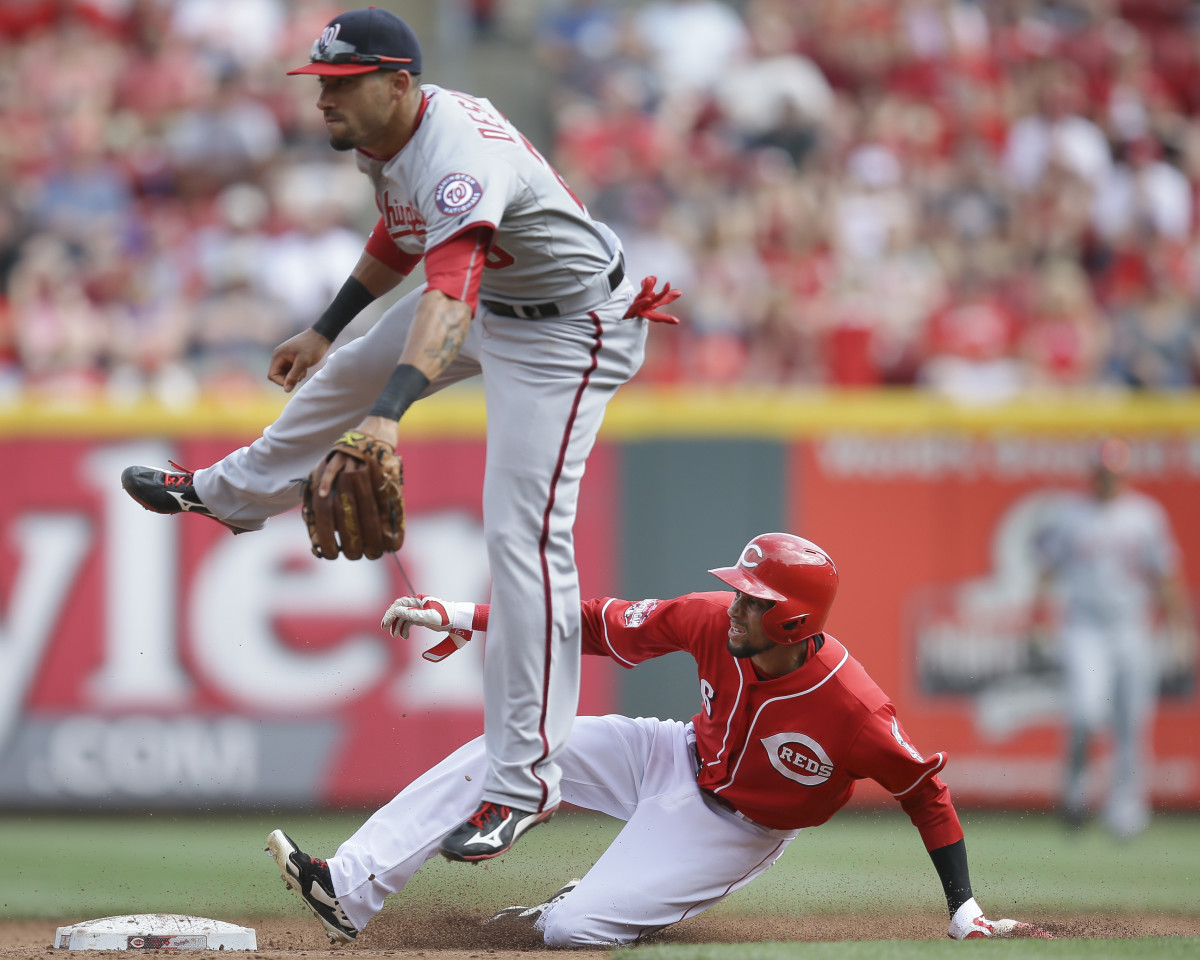As baseball goes high-tech, stealing a base still old school
CINCINNATI (AP) Billy Hamilton doesn't bother to watch video of pitchers' moves to home plate. When he reaches first, one of baseball's top base stealers goes more by observation and instinct.
While technology has significantly changed the game with every nuance measured and broken down statistically, a computer printout can't give him what he needs when he leads away from the base.
''I see so many things happen when I'm on the bases, so I can't go into a game and say this is what the pitcher does,'' Hamilton said. ''You've got to play it by ear, watch them during the game and see what kind of moves they make.''
While charts of every batted ball let teams shift on hitters, base stealing is still largely observational even though runners and managers have all the data they could want.
''They have technology out there: Pitchers' times to the plate, runners' base stealing times, catchers' throwing times,'' Giants manager Bruce Bochy said. ''But it's not a perfect science. Pitchers vary their moves at times. You still want to use your eyes and a stopwatch, your old-fashioned way of doing things.''
Simply put, there are too many unmeasurable variables involved in that mad, 90-foot dash to the next base.
Following this weekend's games, major league runners were successful at stealing 69.3 percent of the time - the same percentage as in the 1999 season, according to STATS. The success rate has fluctuated between 70.2 percent and 74.4 percent over the last 12 years.
While statistically-inspired defensive shifts have helped dampen offenses, the running game is pretty much the same. And so is the way teams prepare for it.
''We still use the stopwatch on the running game,'' Braves manager Fredi Gonzalez said.
So do the other teams. First base coaches pull them out of their back pockets and time a pitcher's move to the plate during a game. It helps them to know how quickly the pitcher is getting rid of the ball during any given inning.
If it takes less than 1.2 seconds to get the ball to home, there's not much point in trying to steal. Hamilton learned that as a rookie last season, when he would run anyway and was thrown out a major league-leading 23 times while stealing 56 bases.
He's being smarter about it this year and has a major league-leading 21 steals in 24 tries.
''You steal off the pitcher, not off the catcher,'' Hamilton said. ''It doesn't matter who's catching. When I see a guy is 1.2 (seconds) to 1.5, I know what type of lead I need to get, what type of jump I've got to get.''
After the weekend, the Reds led the majors with 49 steals in 60 attempts, an indication they're picking their spots well. The Dodgers had the worst success rate in the NL, with only 12 steals in 27 tries.
In the AL, the Tigers had 45 steals and the Astros 43. The White Sox were worst with only 15 steals in 29 tries.
Someone as fast as Hamilton doesn't have to worry so much about the catcher, but other runners take into account the catcher's ability to get rid of the ball and make an accurate throw. The Cardinals' Yadier Molina, the Rangers' Robinson Chirinos and the Nationals' Wilson Ramos were the best at throwing out runners last season, according to STATS.
Managers don't need a detailed breakdown to figure that out.
''Sometimes all you have to do is look at the stats sheet and see that a guy has given up 20 stolen bases and has only three caught stealings,'' Reds manager Bryan Price said. ''You plug in a combination of things.''
Pitchers will vary their moves to first base and to the plate, trying to throw off a runner's timing. They'll hold the ball longer. Throw over to first more often. Try anything to make the runner reluctant to take off.
Meanwhile, runners and managers are watching to see if a pitcher loses focus on a runner, which makes it easier to take the next base.
During a game last month at Great American Ball Park, hard-throwing Cincinnati closer Aroldis Chapman wasn't paying much attention to Atlanta's Phil Gosselin on second base in the ninth inning.
Chapman took too long to throw his first pitch - 1.7 seconds to get the ball to home - and Gosselin decided to steal third. He succeeded, then scored on a wild pitch for a 2-1 win over the Reds.
Gosselin didn't have a stopwatch time or a statistical analysis at hand. He used his eyes, trusted his instincts.
''I said to myself if he's slow again, I'm going to take a shot again and go for it,'' Gosselin said.
---
Follow Joe Kay on Twitter: http://twitter.com/apjoekay



































